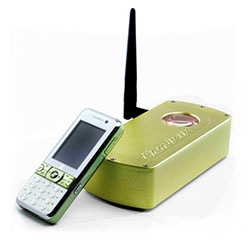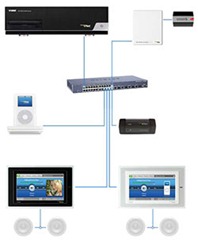 Bowers & Wilkins, or as they are more likely known to most, B&W, have started a music club partnering with none other than Peter Gabriel and his Real World Records. The idea is to offer music in lossless compression to those [of us] who twitch over the MP3 downloads that are so popular. Bandwidth is soaring and disk space googolic – let us have music in its pure form and not in a tin can. We can take it!
Bowers & Wilkins, or as they are more likely known to most, B&W, have started a music club partnering with none other than Peter Gabriel and his Real World Records. The idea is to offer music in lossless compression to those [of us] who twitch over the MP3 downloads that are so popular. Bandwidth is soaring and disk space googolic – let us have music in its pure form and not in a tin can. We can take it!
Every month a new album will be published for download in Apple Lossless or Flac, ready to be put to CD or thrown straight at your media streamer; all at a yearly subscription rate equalling roughly a mere 5 or 6 CD albums. So, if you like being subjected to something new once in a while, this is cheap whichever way you look at it; and bloody good quality to boot. Last month featured Little Axe – this month Grindhouse (mondo cane) and the next is Gwyneth Herbert. A truly varied selection.
Oh – the copy cat thing? Super cool blog spot Download Squad posted this this morning.
Did I say lossless compression enough? Take a look at the cover art you get with most download services. If it is even there it is usually restricted to a measly thumbnail of the cover. Even that is lossless in B&W’s club… you can download an actual booklet or insert with every CD. Printing it can be a bit of a challenge, though. But that is hardly their fault. No, this is going to be very, very nice.
Thumbs up! And let us have some copy cats already!
 British audiophile magazine
British audiophile magazine  Like a couple of other devices mentioned here, this is one of those almost-need-to-have things. It rips, plays and serves. There is a CD/DVD transport that supports
Like a couple of other devices mentioned here, this is one of those almost-need-to-have things. It rips, plays and serves. There is a CD/DVD transport that supports  Tivoli Audio are known for some of the coolest table top radios on the market in general and for Henry Kloss’ design in particular. They too have jumped on the wagon and done a streaming piece of art with their new NetWorks.
Tivoli Audio are known for some of the coolest table top radios on the market in general and for Henry Kloss’ design in particular. They too have jumped on the wagon and done a streaming piece of art with their new NetWorks.
 One of my favourite Shakespeare one liners [the better part of a verse, more like] is Juliet’s immortal outburst at Romeo; that had he been the nephew of
One of my favourite Shakespeare one liners [the better part of a verse, more like] is Juliet’s immortal outburst at Romeo; that had he been the nephew of 
 With their MusicPal internet radio, Freecom shows a fairly classy looking albeit, barebone device. Like the
With their MusicPal internet radio, Freecom shows a fairly classy looking albeit, barebone device. Like the  This is an awsome implementation of a dead simple concept. The Vibe Audio System consists of a media server with
This is an awsome implementation of a dead simple concept. The Vibe Audio System consists of a media server with 